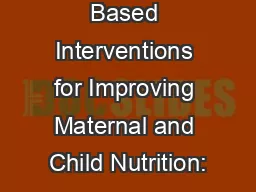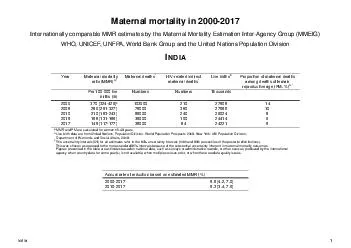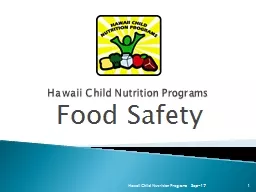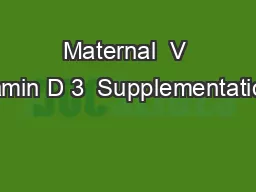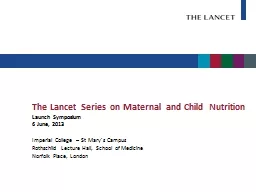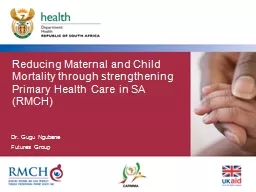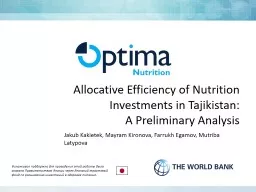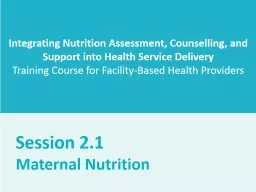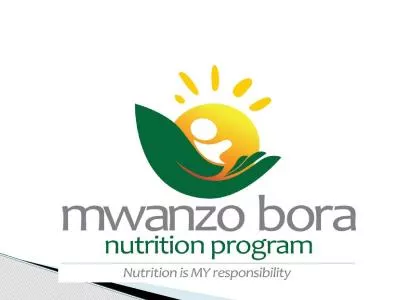PPT-Evidence Based Interventions for Improving Maternal and Child Nutrition:
Author : min-jolicoeur | Published Date : 2018-09-16
What Can be Done and at What Cost Zulfiqar A Bhutta 12 Jai K Das 1 Arjumand Rizvi 1 Michelle Gaffey 2 Neff Walker 3 Sue Horton 4 Patrick Webb 5 Anna Lartey
Presentation Embed Code
Download Presentation
Download Presentation The PPT/PDF document "Evidence Based Interventions for Improvi..." is the property of its rightful owner. Permission is granted to download and print the materials on this website for personal, non-commercial use only, and to display it on your personal computer provided you do not modify the materials and that you retain all copyright notices contained in the materials. By downloading content from our website, you accept the terms of this agreement.
Evidence Based Interventions for Improving Maternal and Child Nutrition:: Transcript
Download Rules Of Document
"Evidence Based Interventions for Improving Maternal and Child Nutrition:"The content belongs to its owner. You may download and print it for personal use, without modification, and keep all copyright notices. By downloading, you agree to these terms.
Related Documents

